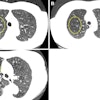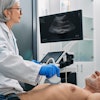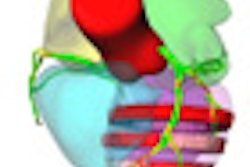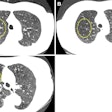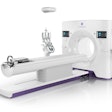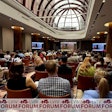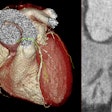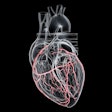Dear Cardiac Imaging Insider,
A lot of people need stress myocardial perfusion scans, but far fewer of them can safely hop on a treadmill and get their hearts pumping fast enough for a good myocardial blood flow. For these patients pharmacologic stress agents are a good alternative, of course, but the mainstay drug, adenosine, comes with a wide range of side effects such as facial flushing, temporary rashes, and lightheadedness that bothers some patients.
Enter regadenoson, a selective coronary vasodilator that may be a little easier to tolerate. Reporting from the October European Association of Nuclear Medicine (EANM) meeting in Birmingham, U.K., AuntMinnieEurope.com contributing writer Alexander Ward said the new agent may be especially useful in obese patients and those with respiratory disease. You'll find the rest of the story here.
In cardiac CT imaging, a new study from Germany takes a novel look at radiation dose in 64-detector-row CT of the heart. Many studies have measured patient dose in the fast-growing modality, but most of the patients in those studies had the good fortune to present with normal sinus rhythm, and heart rates adequately slowed by beta-blockers.
For these patients, prospective ECG-triggered scans are ideal, producing diagnostic image quality at ever-lower radiation doses. But in the real world, patients come in with fast heart rates, pacemakers, and a wide range of arrythmias that can substantially alter the CT dose. By how much?
In their study, German researchers used a phantom to simulate dozens of combinations of heart rates and arrythmias, analyzing the resulting doses and, in the process, providing fair warning to anyone wanting to scan patients with certain conditions that the resulting doses could be off the charts. Get the details of this unique CT study by clicking here.
From the European Society of Cardiology (ESC) 2011 congress in Paris, researchers reported that the population of Singapore has an unusual number of coronary artery anomalies. In particular, the study of more than 2,000 patients found a number of patients in which an anomalous right coronary artery coursed between the aorta and the pulmonary artery, a condition that carries a risk of sudden death.
Finally, population-based coronary artery calcium (CAC) scoring with CT is gaining favor in some circles for its ability to predict adverse events in individuals at intermediate risk of heart disease. But proponents of routine CAC scoring may only be half right, according to a study from the Netherlands that analyzed cost-effectiveness in a model using data from the Rotterdam study.
The researchers found that CAC scoring may be cost-effective in men, but not in women, who face a more complex relationship to coronary heart disease. For women, other strategies will find more heart disease for a lot less money, they concluded in a study you'll find here.
We invite you to scroll through the links below for the rest of the news in cardiac imaging in Europe, and be sure to check back for new updates in your AuntMinnieEurope.com Cardiac Imaging Community.


